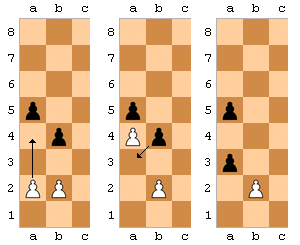In the game of chess, every move counts. Each action you take can drastically change the way the game will play out from there on. By the second move, there are 72,084 possible games. By the third move, 9 million possible games exist. By the fourth, there are 318 trillion possible games. Essentially, after the first move, the game becomes nearly impossible to predict. There are more possible games on a chessboard than there are atoms in the universe. What spawns all of these possibilities is the first move.
This makes the first move all that terrifying. One mistake and you have destroyed countless possibilities where you are victorious. On the last few moves of the game, the results are much more predictable as the possibilities have been weeded out. Therefore, you can have more confidence in your moves. But the first move is as far as you can get from the end move, with an infinite sea of possibilities between you and the other side.
The corollary to this is that if you do make a mistake on your first move, then you have infinite ways to fix that mistake. So don’t be afraid of taking the first move – simply relax and play the game.
(inspiration/paraphrased from Harold Finch, Person of Interest)



